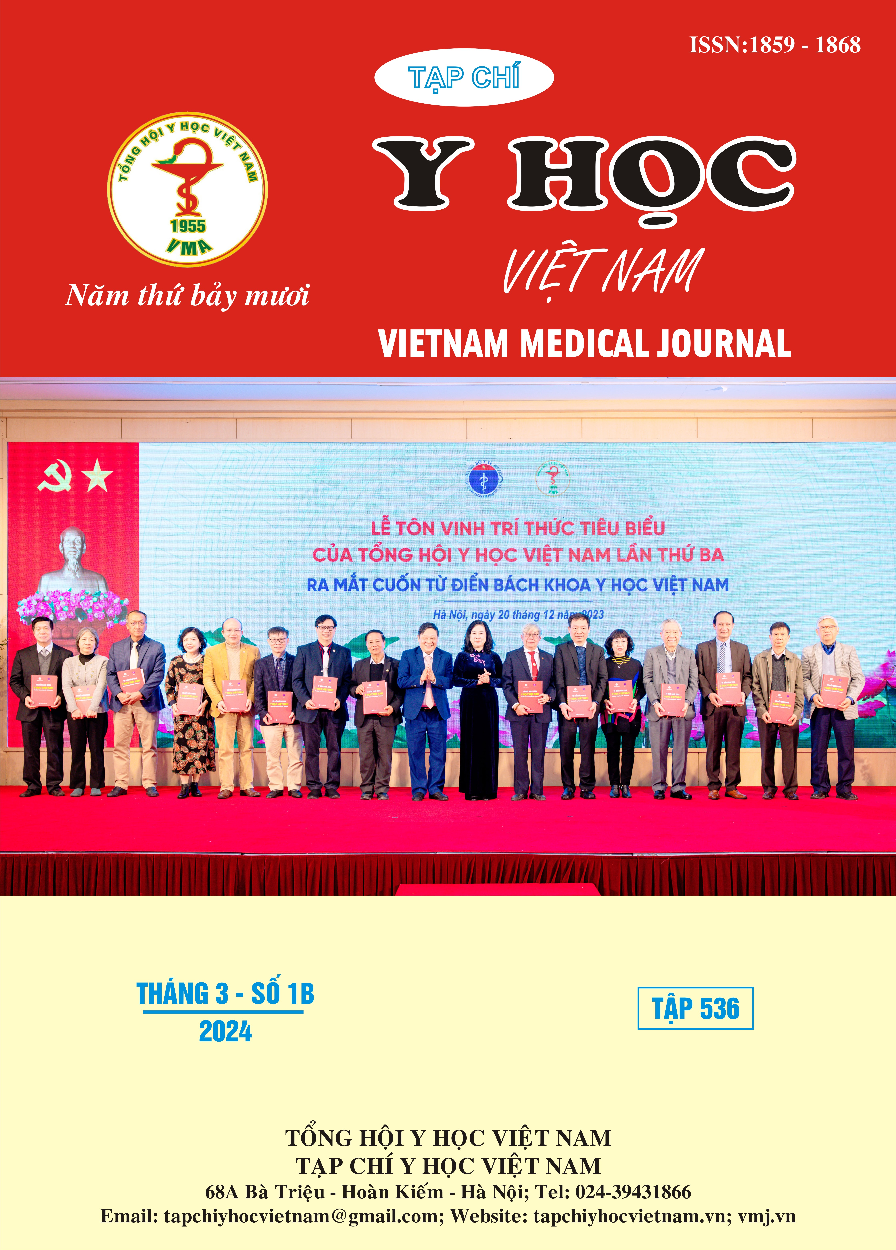CLINICAL AND IMAGING CHARACTERISTICS OF ISCHEMIC STROKE DUE TO INTRACRANIAL ATHEROSCLEROSIS
Main Article Content
Abstract
Target: Describe clinical and paraclinical characteristics of patients with intracranial atherosclerosis. Analysis of the mechanism of cerebral stroke in the setting of intracranial stenosis. Methods: a cross-sectional descriptive study, analysis of 135 patients with ischemic stroke due to intracranial atherosclerotic stenosis at Bach Mai hospital in 2022-2023. Results: Characteristics of patients with ischemic stroke due to intracranial atherosclerosis: advanced age (64.9 ± 12.6); The proportion of men is higher than that of women (% men: 65.9%); Hypertension is the leading risk factor for the disease (62.2%); Mainly anterior cerebral circulation intracranial atherosclerosis (85.9%); The common mechanism of stroke is thrombosis at the site of stenosis or arterio-arterial thrombosis (65.2%); There was no difference in ischemic stroke recurrence and neurological function outcomes at 3 months between the group of patients with moderate versus severe intracranial atherosclerosis. Conclusion: Intracranial atherosclerosis is more common in the anterior cerebral circulation, and the artery-to-artery mechanism is the most common.
Article Details
References
2. Gutierrez J, Turan TN, Hoh BL, et al. Intracranial atherosclerotic stenosis: risk factors, diagnosis, and treatment. Lancet Neurol. 2022;21(4): 355-368. doi: 10.1016/S1474-4422 (21)00376-8
3. Thảo TTP, Phước LV, Dương NQT, et al. Vai trò của chụp cắt lớp vi tính mạch máu trong chẩn đoán hẹp tắc động mạch nội sọ ở bệnh nhân đột quỵ thiếu máu não cấp. vjrnm. 2020;(39):35-40. doi:10.55046/vjrnm.39.192.2020
4. Kleindorfer DO, Towfighi A, Chaturvedi S, et al. 2021 Guideline for the Prevention of Stroke in Patients With Stroke and Transient Ischemic Attack: A Guideline From the American Heart Association/American Stroke Association. Stroke. 2021;52(7). doi:10.1161/STR.0000000000000375
5. Sacco RL, Kargman DE, Gu Q, et al. Race-Ethnicity and Determinants of Intracranial Atherosclerotic Cerebral Infarction. Stroke. 1995;26(1):14-20. oi:10.1161/01.STR.26.1.14
6. Chimowitz MI, Lynn MJ, Howlett-Smith H, et al. Comparison of warfarin and aspirin for symptomatic intracranial arterial stenosis. N Engl J Med. 2005;352(13): 1305-1316. doi:10.1056/ NEJMoa043033
7. Bang OY. Intracranial Atherosclerosis: Current Understanding and Perspectives. J Stroke. 2014;16(1):27-35. doi:10.5853/jos.2014.16.1.27
8. Banks JL, Marotta CA. Outcomes Validity and Reliability of the Modified Rankin Scale: Implications for Stroke Clinical Trials. Stroke. 2007; 38(3): 1091-1096. doi: 10.1161/ 01.STR. 0000258355.23810.c6
9. Derdeyn CP, Fiorella D, Lynn MJ, et al. Intracranial stenting: SAMMPRIS. Stroke. 2013; 44(6 Suppl 1): S41-44. doi: 10.1161/ STROKEAHA.111.000370
10. Kim BJ, Rha JH, Kim SR, et al. The effect of cilostazol on carotid intima-media thickness progression in patients with symptomatic intracranial atherosclerotic stenosis. J Stroke Cerebrovasc Dis. 2014;23(5):1164-1170. doi:10. 1016/ j.jstrokecerebrovasdis.2013.10.007


